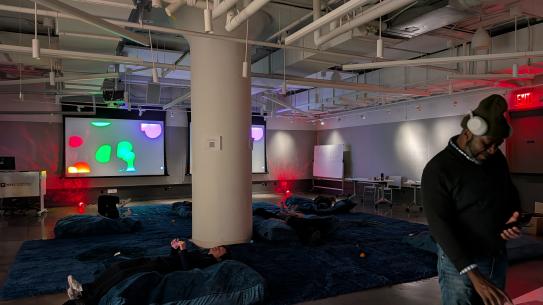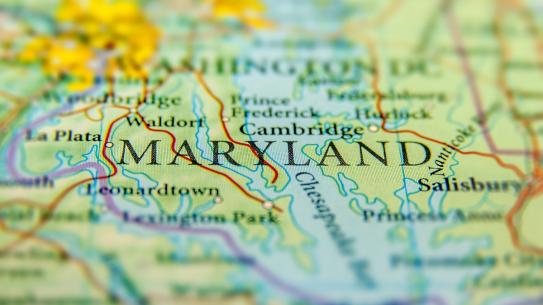5G Wireless Well within Reach

Brooklyn is now widely accepted within the telecommunications industry as a major hub of 5G wireless research, and the credit goes wholly to NYU WIRELESS. The multidisciplinary academic research center has been at the forefront of investigating the millimeter-wave (mm-Wave) spectrum and making fifth-generation wireless a commercial reality, and now, industry leaders predict that consumers will be seeing the results by 2017.
In late April, those industry leaders were among the attendees of the third annual Brooklyn 5G Summit, organized by NYU WIRELESS and Nokia. The invitation-only event — acknowledged as the premiere such gathering in the world — drew not only luminaries from AT&T, Verizon, Japanese carrier NTT DoCoMo, Vodafone, and other industry giants, but academic researchers from around the globe. Some 3,000 viewers who did not attend in person watched via live stream, thanks to the Institute of Electrical and Electronics Engineers’ IEEE TV.
“Each of those major carriers has more than 100 million subscribers,” said Theodore “Ted” Rappaport, the founding director of NYU WIRELESS and the David Lee/Ernst Weber Professor of Electrical Engineering at the NYU Tandon School of Engineering. “It’s unprecedented to have them together at a summit, publicly speaking with great candor and detail about their differing visions for the future of 5G and a new wireless standard — and openly sharing their companies’ roadmaps for getting there.”
Rappaport explained that the rare chance to hear speakers like Executive Vice President of AT&T Tom Keathley, Chief Technology Officer of NTT DoCoMo Seizo Onoe, and President of Nokia Bell Labs and Nokia CTO Marcus Weldon share their insights provided the ultimate fly-on-the-wall experience for attendees. “NYU WIRELESS has 17 industry affiliate partners who gain early access to the important research we do here,” he said, “and convening the Summit is another way that we help make sure they remain on the cutting edge. Here is where the true capabilities of 5G are being calibrated.”
In his opening keynote, “5G: Enabling 5 New Dimensions of Human Possibility,” Marcus Weldon explained that we are at the nexus of a global and local technological revolution unlike any other in history. With 50 billion devices soon to be connected around the world, we are seeing only the tip of the iceberg, he predicted. “Yes, artificial intelligence is cool,” he said, “but not as cool as the network of the future.” He called upon his audience to help create that network, quoting Socrates, who is reported to have said, “The secret of change is to focus all of your energy, not on fighting the old, but on building the new.”
We are, according to Weldon, moving well past a time in which an ability to share selfies or surf the Internet from a device worn on the wrist are considered impressive. We are entering an era in which information about a patient’s condition is routinely and seamlessly transmitted to a doctor; cars communicate in order to avoid accidents; the world’s 770 million illiterate adults have access to needed educational materials, and smart buildings make the most efficient possible use of energy.
During his own address, NYU president Andrew Hamilton noted that the university has always been a place of vital research in the field of communications; Samuel Morse, then a professor, first successfully demonstrated his new telegraph in Washington Square on January 24, 1838. “The discoveries now taking place at NYU WIRELESS are revolutionizing communications,” Hamilton said, “and they are truly a fitting legacy for Morse.” During the Summit, researchers from NYU WIRELESS demonstrated millimeter-wave channel simulator software that they are making open-source in order to speed 5G development, an innovative biosensor system for neuroscience applications that takes precise measurements of electrochemical signals, and more.
There was much to interest even a layperson: at MetroTech Center, where the Summit was held, was parked a massive three-story truck outside the Dibner Building. The “Smarter World Tour” truck, sponsored by the Dutch semiconductor company NXP, contained more than 170 displays that allowed visitors to try out the latest data aggregators, wearables, medical sensors, radio frequency cooking tools, myoelectric gesture recognition devices, and more.

NXP’s Smarter World Tour rolling exhibit brings the Internet of Things to life, with more than 170 demos to test drive.
The Summit included segments on vehicle-to-vehicle (V2V) and vehicle-to-infrastructure (V2I) communication, giving an exciting glimpse of the automotive future. (Prius models being shipped in Japan, as Onur Altintas of the Toyota InfoTechnology Center explained, are already compatible with advanced vehicle-infrastructure cooperative systems, allowing them to signal information about oncoming vehicles and pedestrians to a driver.)
The academics in attendance found it particularly gratifying to hear Thyagarajan Nandagopal, a program director at the National Science Foundation, who discussed the vision and accomplishments his organization has made in funding the cutting-edge academic research that is powering 5G. Nandagopal spoke at a session that also included Professor Alenka Zajic of Georgia Tech, who presented some of the world’s first measurement results for frequencies at 300 GHz — much greater than anything used today.
During an eagerly anticipated panel session moderated by Rappaport, he debunked the myth that mm-wave is limited to short distances, pointing out that the world has thus far followed NYUs original measurement system, which was limited in power and antenna gain, and that if larger transmitter powers or larger antennas were used, distances much greater than several kilometers could easily be achieved at mm-wave frequencies under certain circumstances. This opens up mm-wave for use in backhaul or in rural areas — much greater distances than the industry seems to be limiting itself to.
Among the most momentous news shared at the Summit was, however, the announcement of fixed wireless trials on the part of several companies that could bring 5G technology to consumers by 2017 — well ahead of original projections. “Before we conducted our pioneering exploration of the underutilized mm-wave frequency spectrum, the industry did not have information vital for the design and operation of 5G networks,” Rappaport said. “Considering that it was not until about 2012 that we proved that 5G was even a viable possibility, the progress has been astonishingly rapid.” He continued, “We know from Michael Ha, the Deputy Chief of the Policy and Rules Division of the FCC’s Office of Engineering and Technology, who spoke at the Summit, that the Commission is moving quickly to implement policy changes that will enable the industry to move forward.”
If projections are correct, consumers could soon be enjoying 1,000 times the capacity and many times the speed of 4G LTE. While that does mean that movies will download faster and more selfies will no doubt be taken, the implications, as Weldon noted, are much more earthshaking and transformative than that.
Join Professor Ted Rappaport as he walks along the cutting edge of IoT on the Smarter World Tour:



